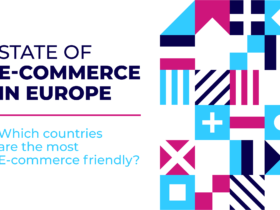Understanding the culture of the market that you target is integral to being able to communicate your e-commerce effectively. We’ve spoken extensively on how you should go about getting your store ready for cross-border e-commerce, and why that’s so important. One model for identifying the differences in culture is Hofstede’s Cultural Dimensions. This model consists of a series of indices by which you can rank a country or market.
In this article, I’ll go into detail on each of these indices to explain why they’re important and how to adapt your cross-border e-commerce strategy to targeting each of these cultures. There is an index for each of the following topics:
A Culture of Power Distance: who holds the power?
Power distance is described as “the extent to which the less powerful members of organizations and institutions (like the family) accept and expect that power is distributed unequally.” For example, in Asian and far eastern families there is a high level of power distance, i.e. children accept the decision of the parent more than they would in say our society.
How does this idea of power distance affect marketing?
Carrying on the family example, consider the “pester power” of a child who has low power distance, rather than high power distance. The higher it is, the less “pester power” is going to be an influence on the purchasing decision of the parent.
Therefore, in countries with high power distance marketing (and products) should be aimed more at parents than children, and vice versa.
Individualism vs. Collectivism: Does your culture fit into groups?
Individualism vs. Collectivism is defined as the “degree to which people in a society are integrated into groups.” This clearly has a profound impact on marketing. If customers fit into clearly defined groups, then it is much easier to target them.
Cultures with a high level of individualism are harder to penetrate than others. Focus on those cultures with clearly defined groups that fit with your offering (or if those groups are important enough, develop an offering for them).
Uncertainty Avoidance: Where are your risk-takers?
Uncertainty Avoidance is defined as “a society’s tolerance for ambiguity.” Cultures with a high level of uncertainty avoidance opt for guidelines, laws, rules and regulations etc. Those with a low level of uncertainly avoidance tend to be more rebellious and “free flowing.”
This idea can be mirrored in the messaging given to target audiences. For example, we would typically describe the UK as having a low level of uncertainty avoidance. If you look at car advertising, particularly that of 4x4s, the message is often that of freedom. The idea of getting away, and going wild is particularly important. In cultures with a high level of uncertainty avoidance, this messaging is often replaced by the idea of strength and security.
This is mirrored in alcohol marketing also, think of campaigns such as WKD’s “Have you got a WKD side?” and you can clearly see that the message is one of freedom.
Masculinity vs. Femininity: Every man for himself or working together?
This is not about whether a culture is sexist or not, but rather whether it displays characteristics that are typically thought of as masculine or feminine.
Masculinity is defined as “a preference in society for achievement, heroism, assertiveness and material rewards for success.” Femininity is defined as “a preference for cooperation, modesty, caring for the weak and quality of life.” The market for sports would typically exhibit more masculine characteristics. Thus, marketing revolves around masculine messaging. Examples of this are Nike’s “Just Do It” slogan, or Adidas’ “Impossible Is Nothing”.
One market that is clearly feminine is that for charities. Consider Oxfam’s slogan of “Be Humanity”, or the Red Cross slogan “With humanity, towards peace”. This is clearly inclusive and caring. Consider whether your target audience exhibit masculine or feminine characteristics.
Confucian Dynamism: Long-term vs. Short-term
Confucian dynamism is a cultures attitude towards time. Does that culture think in the long-term, or the short-term?
In the UK (and generally in the western world) we have a short-term attitude towards most things. Our “buy now, pay later” attitude means that we rarely think more than a few years ahead. Here is an example. If I offered you a risk-free interest rate of 7% per annum, you would probably bite my hand off. However, if I told you that you had to lock your money in for 10 years, it is likely that you would reconsider.
On the other hand, if I was in a culture with a long-term orientation, and I offered to double someone’s investment (risk free) within 10 years (which amounts to about 7% compound interest per annum), they would likely be very eager to take me up on the offer. This exists within countries too. Think of the difference in time orientation between the millennials markets, and the markets of your grandparents or great-grandparents.
Confucian dynamism is an important idea when it comes to marketing. If you are selling to a culture that has a long-term outlook, they need to know that you are going to be there in years to come. This can be done by advertising long warranties, providing long term support, putting an “established date” on your branding or any other methods that appeal to the long-term orientation of the market.
If they are short-term, then the message needs to be that of innovation, change and new products and services.
Indulgence vs. Restraint: Emotional or Rational culture?
Indulgence is defined as “a society that allows relatively free gratification of basic and natural human desires related to enjoying life and having fun.” Whereas restraint is defined as “a society that controls gratification of needs and regulates it by means of strict social norms.”
This applies if you are selling a product that relies on an indulgent market, attempting to sell it in a restrained culture. It is unlikely that you will be able to mirror this success in countries such as Oman and Dubai.
To be successful in cross-border e-commerce, you need to be aware of the differences in culture. This is especially true if you are thinking of expanding your presence outside of countries similar to yours. It’s important to consider each factor of your target market in order to find your sweet spot where you can communicate your e-commerce properly. When in doubt, consult natives of your target market to understand their culture, and test their reactions to your store and products.
Image credit : Romain Trystram





